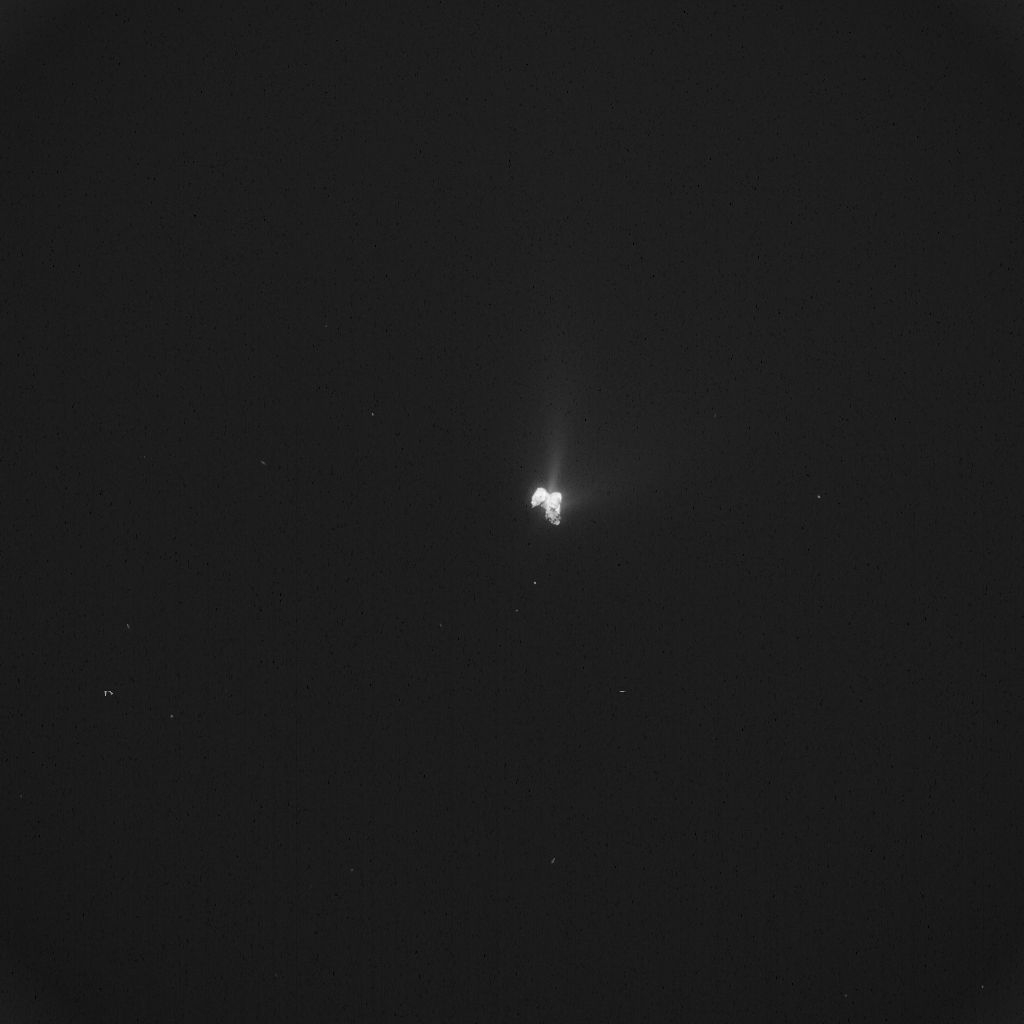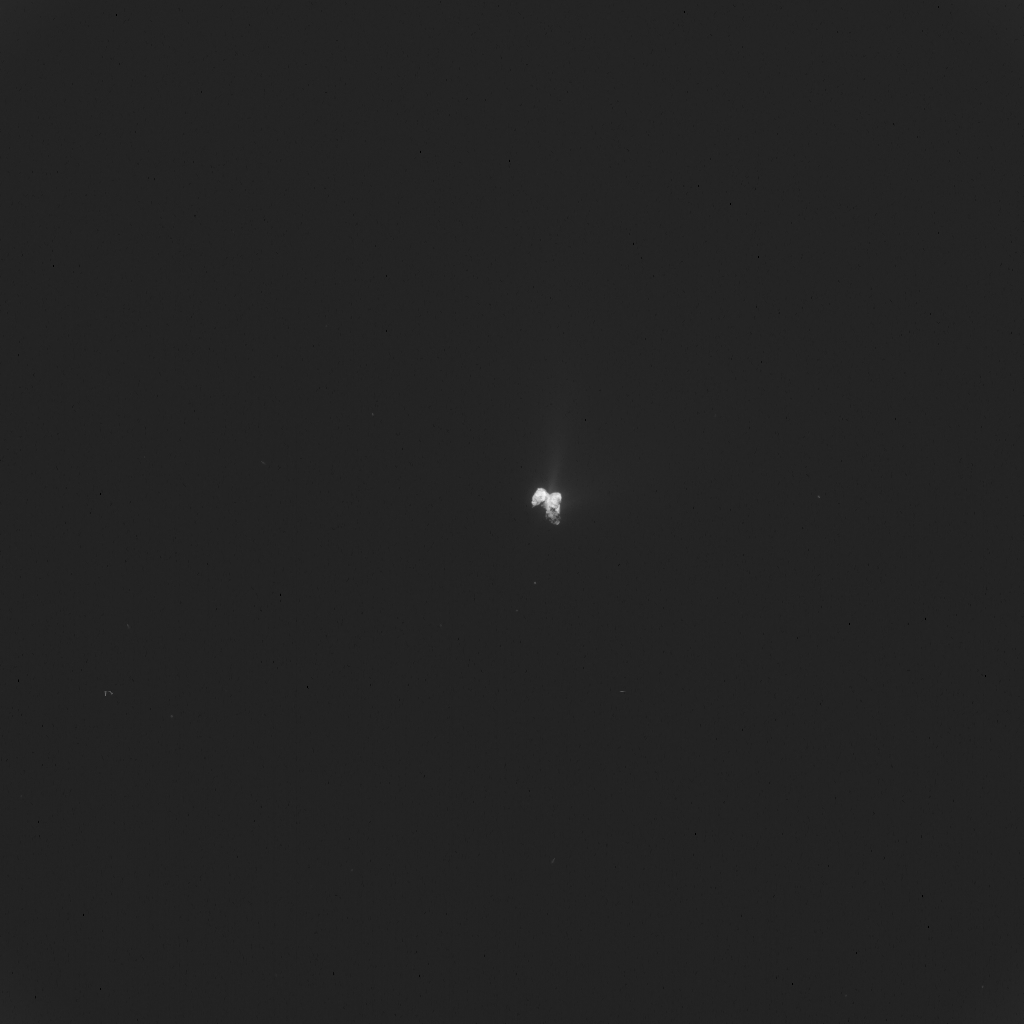Today’s CometWatch entry is an image taken by Rosetta’s NAVCAM on 30 September 2015, about 1488 km from the nucleus of Comet 67P/Churyumov-Gerasimenko. The image was taken a few hours after the spacecraft had reached the farthest point – 1500 km from the nucleus – on its far excursion to study the coma and plasma environment of 67P/C-G on a broader scale.

Single frame enhanced NAVCAM image of Comet 67P/C-G on 30 September 2015, about 1488 km from the nucleus. Credits: ESA/Rosetta/NAVCAM – CC BY-SA IGO 3.0
The scale is 127 m/pixel and the image measures 130 km across. The contrast was increased to reveal the comet’s activity. In this orientation, the small comet lobe is on the left and the large lobe on the right.
The last time Rosetta was at similar distances from the comet nucleus was in late July 2014, during the last few days of the ‘chasing’ phase, before the spacecraft arrived at 67P/C-G on 6 August 2014. For a qualitative comparison, take a look at these two CometWatch images from that period, taken on 30 July 2014, 1630 km from the nucleus, and on 31 July 2014, 1327 km from the nucleus.
At that time, the comet was about 540 million km from the Sun and only moderately active compared to current levels of activity. The comet is now just over 200 million km from the Sun, after passing through perihelion – the closest point to our star along its orbit – on 13 August.
Having reached the farthest point from the comet on the far excursion that started on 23 September, Rosetta is now approaching again, and will be back to about 500 km from the nucleus by 7 October.
The original 1024 x 1024 image of today’s CometWatch is provided below:










Discussion: 7 comments
Could Rosetta sample the bow shock, or have the 1500 km still been inside this boundary?
Looking forward to a post dedicated to this question, and related ones.
Indeed far, far away, Claudia 🙂 Last time we saw 67P at this distance, all chat was about a ‘space ducky’.
Is the coma too dim to be detected by even the very sensitive instruments on Rosetta? ESO can see it (the coma) OK from Earth.
Claudia: Thanks for the link to the 30 July 2014 blog piece. John Broughton’s post there is quite contemporary.
“Because NAVCAM and the OSIRIS wide-angle camera have comparable resolution, we have an agreement with the OSIRIS team to try and avoid publishing too much NAVCAM data immediately, as they could be used to yield science data similar to that coming from OSIRIS.”
That post from Hervé. Honorable NAVCAM Team stood by their word after the six month period. Of course, OSIRIS Team behavior could be due to very high pressure.
“That year, a fairly close encounter with Jupiter caused the orbit to move inwards to a perihelion distance of 3.0 AU (450 million km). Over the next century, the perihelion gradually decreased further to 2.77 AU. Then, in 1959, another Jupiter encounter reduced the comet’s perihelion to just 1.29 AU – which has changed little ever since. It currently completes one orbit of the Sun every 6.45 years.”
https://sci.esa.int/rosetta/14615-comet-67p/
Visually that planetary “billiard table” kinetics morphs the geometry of orbits, even could change their centers, but orbital energy of the objects remains. Am I wrong?
Impressive that 67p’s orbit is calculated to as far back as 1840. Can one go further back and say that (subject to some calculational uncertainty) it first encountered the perturbative effect of Jupiter around a particular century (or millenium), thereby specifying a definitive shift from long-period to short-period?